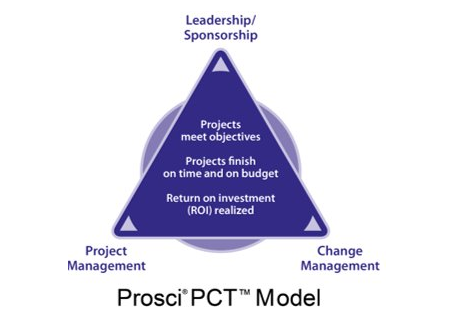Too often, when the topic of change management comes up, the discussion turns to managing timelines, tasks and budgets, confusing the basics of project management with the true objectives of change management. The concepts are not interchangeable, but they are linked.
Delivering a project on task, on time, and on budget are goals of effective project management. By comparison, change management deals with the people side of change – addressing the needs of employees throughout that project or change by providing the specifics of what’s changing, information and training necessary to help them understand and prepare for the change, and clear articulation of the vision of what the organization and their roles will look like once the change is complete.
Even though an organizational change may be flawlessly project managed, its ultimate success is in doubt unless equal attention is paid to managing the people affected through that change as well. For this reason, project management must be coupled with a well-planned approach to Organizational Change Management (OCM).

Research conducted by change management solutions provider Prosci estimates that any organizational change requires adoption by at least 80 percent of the affected workforce to deliver on the expected benefits and be considered successfully implemented. Achieving that level of adoption doesn’t happen without thorough planning and execution of the steps necessary to move people through their own individual change journey, which Prosci describes using the acronym ADKAR.
ADKAR describes the five elements of change that must be addressed for any change to be successful:
- Awareness of the need for the change
- Desire to support the change
- Knowledge of how to change
- Ability to demonstrate new skills and behaviors
- Reinforcement to make the change permanent
If you consider each of the elements from the employee point of view, they might go something like this:
- Awareness: “I know what’s changing, when it’s changing, and why it needs to change.”
- Desire: “I support making the change and I can commit to do my part.”
- Knowledge: “I know what I need to do differently after the change.”
- Ability: “I’ve gained the skills I need and can model the required behaviors.”
- Reinforcement: “I know I can do this day in and day out going forward.”
The essence of OCM is planning and executing the activities necessary to guarantee that each affected employee in the organization is capable of responding with the certainty illustrated above. This is why the intersection of project management with OCM is so critical. We can take the steps necessary to change the mechanics of a business process, for example, within a defined timeframe, but if we don’t at the same time bring along the hearts and minds of the people the organization relies upon to implement and manage their work according to that process, the change will fail.
In a future post, we’ll drill down into each of the specific elements of ADKAR and demonstrate how a comprehensive plan and approach to OCM addresses each element individually and provides employees with a pathway to navigate large-scale change.


